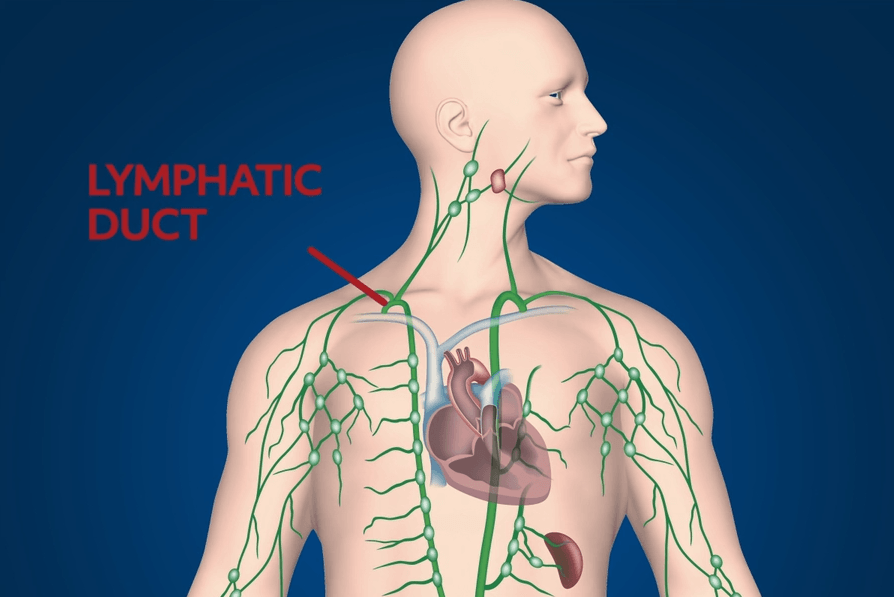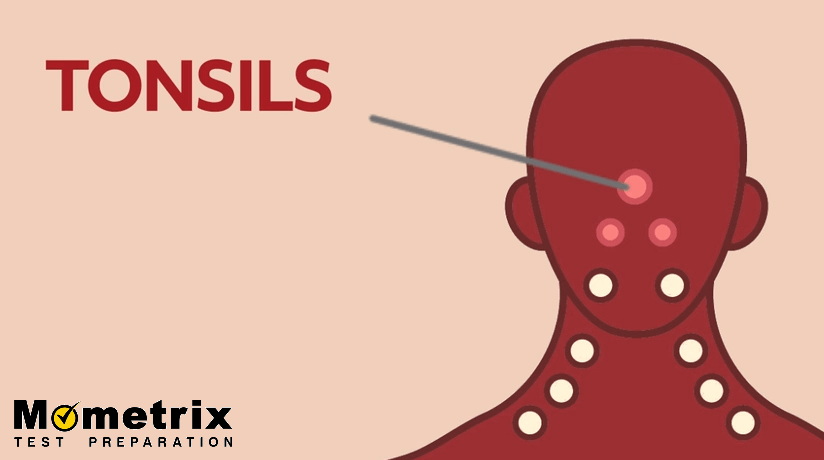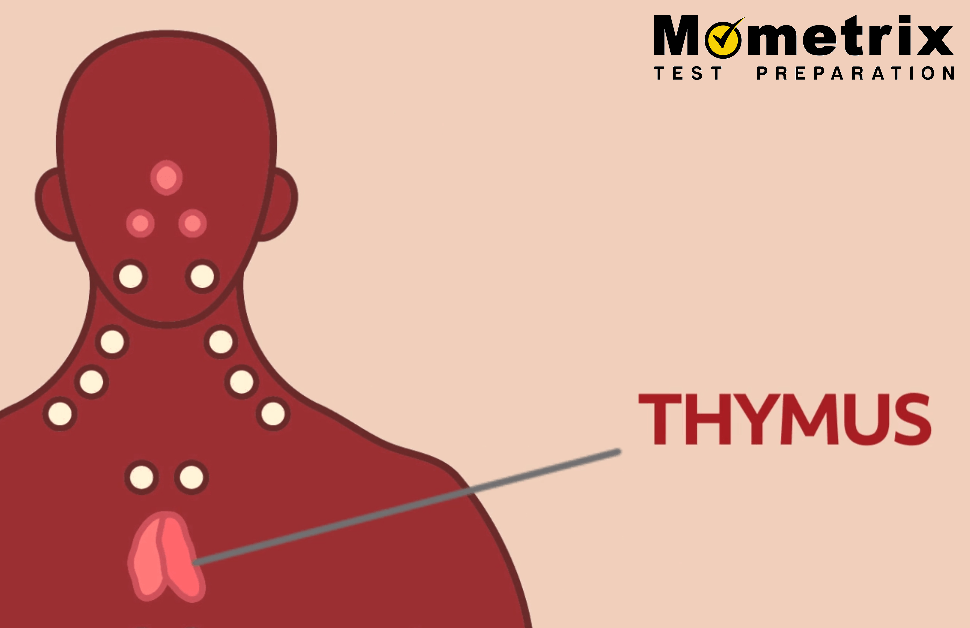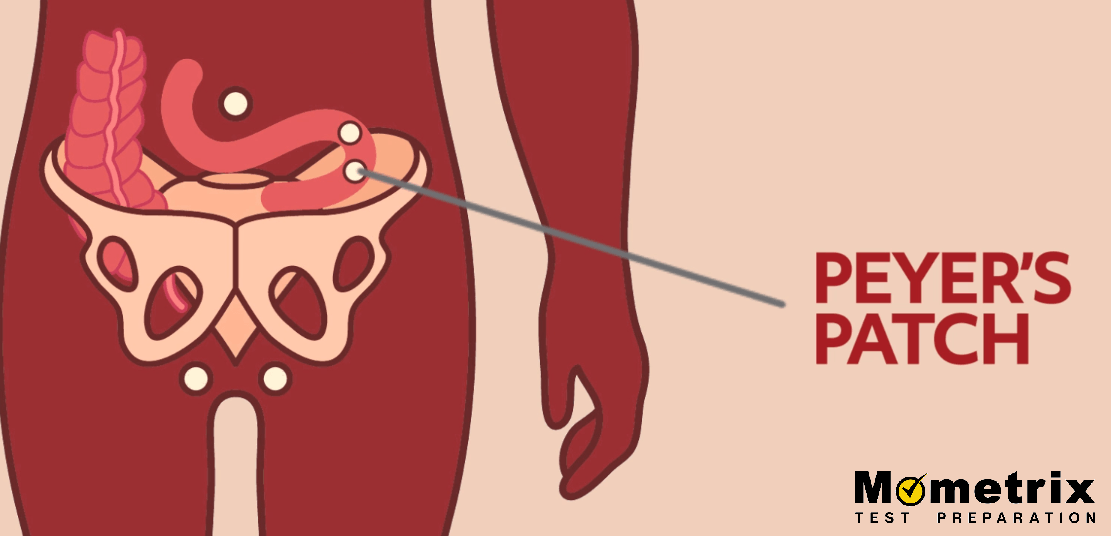Immune System

Hey, guys! Welcome to this Mometrix video about the immune system.
Think of the immune system as the body’s gladiator. It fights for us, defends us, and protects us. The immune system fights off pathogens, the viruses and bacteria that seek to invade our body. It defends us by sending out armies of disease-fighting cells when it senses an intrusion. And the immune system protects us in natural and artificial ways.
Let’s take a look at how the immune system works, all in an effort to help us stay healthy.
The Lymphatic System
The lymphatic system fights infections and keeps the body’s fluid levels balanced. It protects the body from bacteria, viruses, and other pathogens. The lymphatic system has a number of important components, and we’re going to take a look at five of them more in-depth.
Lymph
Let’s talk about lymph. Lymph contains white blood cells that help fight infection. How exactly does lymph circulate? Lymph moves through our system to lymphatic ducts when the skeletal muscles contract.

Lymph only moves in one direction, unlike blood, which circulates through the entire body.
Lymph Nodes
There’s a relationship between lymph and lymph nodes. Lymph nodes filter out harmful substances, ensuring clean lymph gets placed back in the blood supply via the subclavian veins in the neck.
There are lots of lymph nodes in the human body, as many as 700 of them, and they’re located in the neck, armpit, and groin.
Lymph Capillaries and Vessels
Lymph capillaries pick up lymph fluid that leaks from our bloodstream and into tissue before returning that lymph to the circulatory system. Lymph vessels carry lymph throughout the body.
Now we know about these lymphatic systems: the lymph, the lymph capillaries, lymph vessels, and lymph nodes. But what about the lymph tissue?
Lymph Tissues
The lymph tissues, which are rich in small white blood cells called lymphocytes, protect the body from bacteria and other pathogens. The tonsils, adenoids, thymus, spleen, and Peyer’s Patches are all lymph tissues.
Tonsils
Tonsils, located in the pharynx, filter out pathogens that can enter through the mouth or throat.

Thymus
The thymus, located in the back of the neck, produces T-cells, an essential component of the immune system that seeks out and kills disease-carrying cells.

Spleen
The spleen, the lymphatic system’s largest organ, is the cleansing mechanism. Located under the rib cage, the spleen takes dead blood cells and pathogens and removes them from the blood.

Peyer’s Patch
Peyer’s Patch, located in the ileum of the small intestine, protects the gastrointestinal, or digestive, tract from pathogens.

Now we know how lymph tissue protects our body. But those aren’t the only protections.
General Immune System Defenses
There are general immune system defenses, too. Even our skin is part of the immune system because it contains cells that can kill invading bacteria. The ciliated mucous membrane acts like a Venus fly trap, catching dirt and other particles before they can enter the respiratory system.
Glandular secretions destroy bacteria while gastric secretions, or acids, also destroy pathogens. Even bacteria itself helps defend the immune system. Normal bacteria populations battle with pathogens in the gut and vagina, acting as a defense against harmful bacteria. White blood cells also play a big part in our immune defenses.
White Blood Cells
There are five types of white blood cells that can be classified into two broad categories based on their structure: granulocytes and agranulocytes.
Granulocytes
Granulocytes are a category of white blood cells that form in the bone marrow and play a role in fighting disease. There are three types of granulocytes. Neutrophil is the quick strike team, responding quickly to invaders. Basophil signals the body during an invasion, and eosinophil releases a substance that kills the pathogen.
Agranulocytes
Agranulocytes are also formed in the bone marrow and are given their name because they do not have obvious granules in the cytoplasm. There are two types of agranulocytes: monocytes and lymphocytes.
Lymphocytes
Lymphocytes include B-cells, T-cells, and natural killer cells (NK-cells) and are more common in the lymphatic system than the blood.
B-lymphocytes or B-cells make antibodies that specifically target bacteria and go on a search and destroy mission.
T-lymphocytes, or T-cells, are the attack force. They attack and kill infected cells. There are different types of T-cells. Helper T-cells play a critical role in regulating the immune system’s response, and they also stimulate B-cells to make antibodies.
Killer T cells kill virus and cancer cells, while the Memory T cells seem to have a mind of their own. That’s because memory T-cells learn from their past encounters with infected cells and remember how to defeat them. And then, suppressor T-cells stop the immune system’s response after pathogens no longer pose a threat.
The last lymphocyte is the natural killer cells, which bind to certain cells infected with cancer and viruses and kill them. The natural killer cells identify cells that cannot be detected by the T-cells.
Monocytes
Monocytes, the other type of agranulocyte, are the largest and longest-living phagocyte, cells that act like Pac-Man and eat bacteria and other pathogens. Located in the lymph, monocytes also alert T-cells to the presence of those bacterial invaders. Monocytes eventually leave the bloodstream and become macrophages attacking microorganisms and removing dead cell debris.
White blood cells are also called leukocytes, which are produced in red bone marrow, the home of red blood cells, platelets, and white blood cells.
Antigens and Antibodies
Let’s talk about antigens and antibodies and what happens when they enter our bloodstream.
An invader that enters our body, typically as a protein from bacteria, viruses, or fungi, is called an antigen. When these antigens invade, the antibody-mediated response kicks in and repels the invader. Antibodies are part of the response. They can recognize antigens and counteract them.
We’ve already gone over quite a bit of information, so let’s do a short review of the immune system’s steps.
Immune System Process
There are five steps we’ll look at.
It all starts with macrophages, which engulf antigens and break them down.
Next, a helper T-cell joins the macrophages.
Then the body activates killer T-cells and B-cells, and it’s at that point that the killer T-cells go on their search and destroy mission. These killer cells look for and kill cells with the same antigen.
B-cells then morph into plasma cells and memory cells.
The immune system contains two separate parts: the innate immune system, for general defense, and the adaptive, for more specific defense.
The Innate System
We’re all born with an immune system that includes skin, mucus, and even earwax. That’s the innate system, which springs into action like a first-strike force, quickly attacking pathogens that have invaded our body. Here’s an example. You cut yourself, opening a wound that can attract bacteria. The innate system attacks and slows the bacteria.
The Adaptive System
The adaptive immune system is more selective, attacking specific antigens by zeroing in on the intruders. We noted earlier that Memory T Cells remember how to attack these invaders, and these cells are a part of the adaptive immune system. Put another way, the adaptive immune system has a react and prevent mode. It reacts by killing invaders, but it also prevents disease because of the antibodies’ production of B cells.
Natural and Artificial Immunity
But how does the body fight against pathogens? There are several ways, both naturally and artificially.
Natural forms of immunity come directly from our own bodies, while artificial forms come from vaccinations. Let’s take a closer look.
Naturally Acquired Active Immunity
The body has a natural active and passive immunity. Let’s take a look at naturally acquired active immunity. When the body becomes infected with a pathogen, it gets the disease. But our body kicks into gear with an immune response that neutralizes the pathogen. Think of it as being exposed to an invader without an immunization.
Naturally Acquired Passive Immunity
The body also has a naturally acquired passive immunity that happens during pregnancy, when antibodies go from the mother to child, protecting the newborn through childhood.
Artificially Acquired Active Immunity
Then there are artificial means of building immunity. You know all those vaccinations you get as a child? That’s a way of building artificially acquired active immunity.
Artificially Acquired Passive Immunity
On the other hand, artificially acquired passive immunity is from antibodies that come from another individual or animal. These immunizations provide quick protection during an outbreak or emergency.
So that’s our overview of the immune systems, the fighters within us that ward off disease and keep us healthy.
See you guys next time!
- Cotterill, Simon. “Lymphatic System and Immune System | Medical Terminology for Cancer.” Cancerindex.org
- “The Lymphatic System.” Lymphnotes.com
- “Home | Native American Cancer Initiatives, Inc. (NACI).” n.d.
- Jedz Designs. “Beginners Guide.” Tcells.org
- Szalay, Jessie. “Spleen: Function, Location & Problems.” Live Science
- Abt, Michael C., and David Artis. “The Dynamic Influence of Commensal Bacteria on the Immune Response to Pathogens.”
- How Monocytes Function in the Body.” Verywell Health.
- “The Innate and Adaptive Immune Systems.”